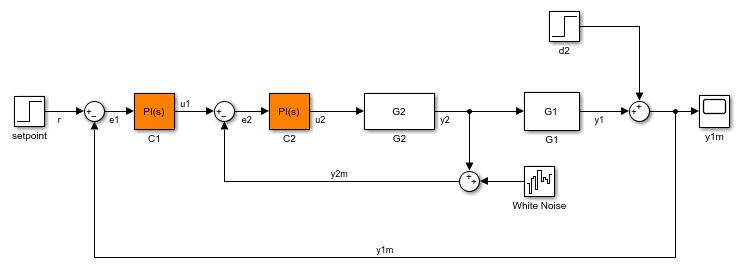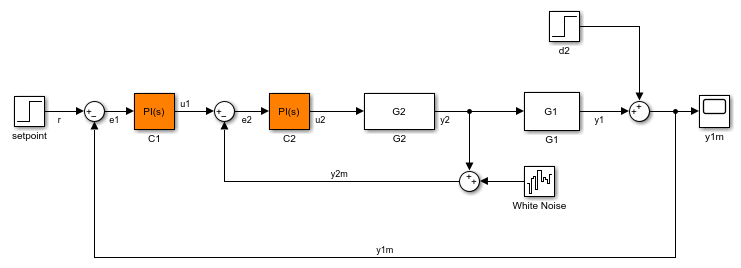setBlockParam
Set parameterization of tuned block in slTuner interface
Syntax
Description
setBlockParam lets you override
the default parameterization for a tuned block in an slTuner interface. You can also specify
the parameterization for non-atomic components such as Subsystem or S-Function blocks.
An slTuner interface parameterizes each
tuned Simulink® block as a Control Design Block, or a generalized
parametric model of type genmat or genss. This parameterization specifies
the tuned variables for
commands such as systune.
setBlockParam( assigns
a tunable model as the parameterization of the specified block of
an st,blk,tunable_mdl)slTuner interface.
setBlockParam(
assigns parameterizations to multiple blocks at once.st,blk1,tunable_mdl1,...,blkN,tunable_mdlN)
Examples
Input Arguments
More About
Version History
Introduced in R2011b
See Also
slTuner | getBlockParam | setBlockValue | setTunedValue | writeBlockValue | systune | genss

